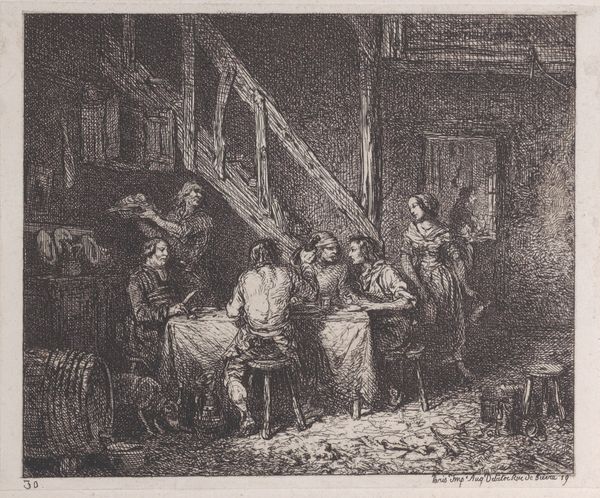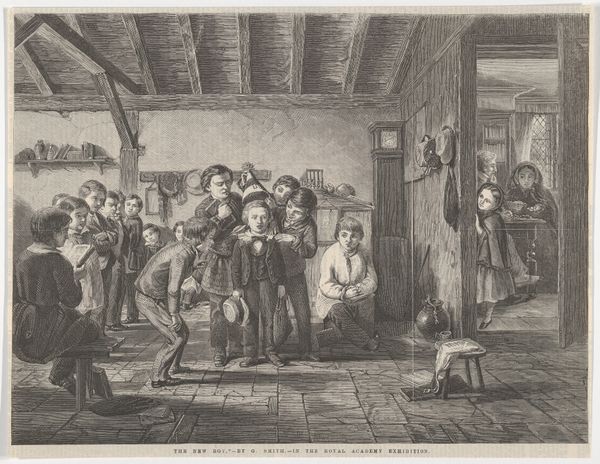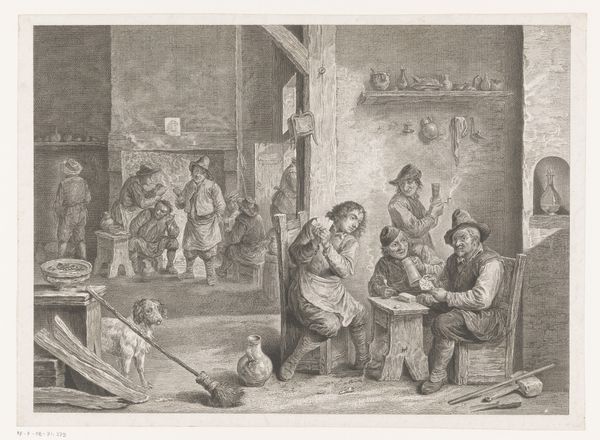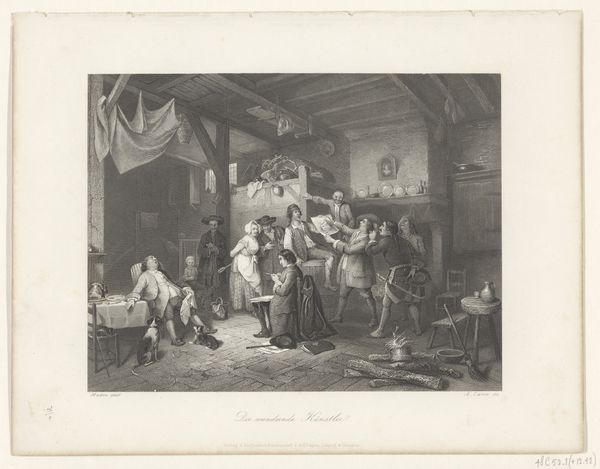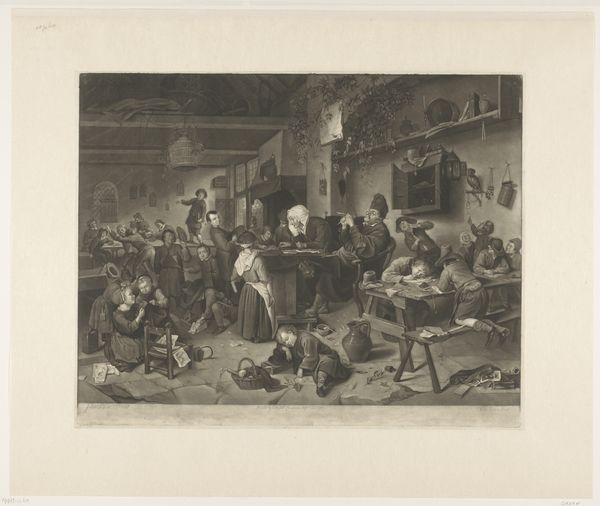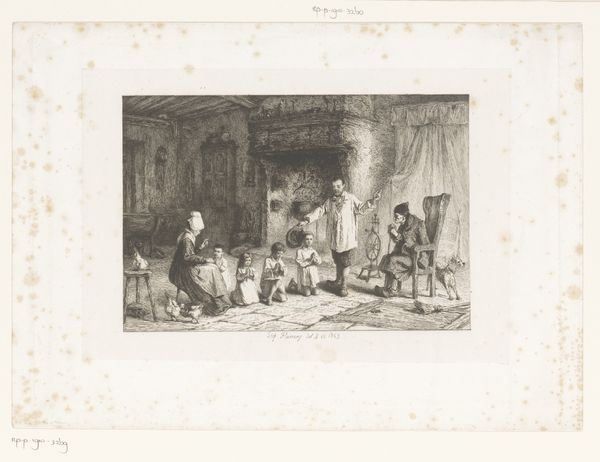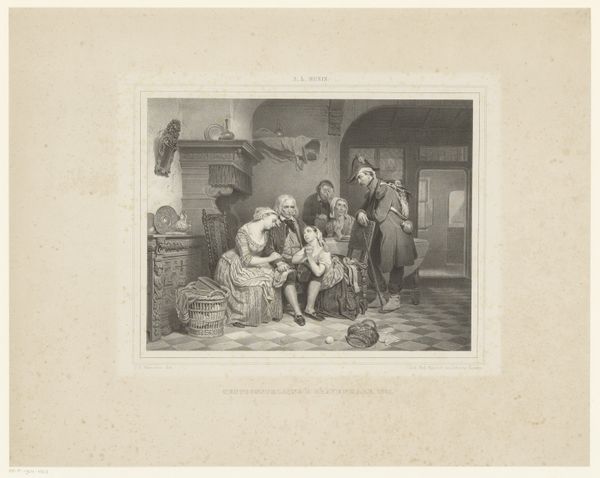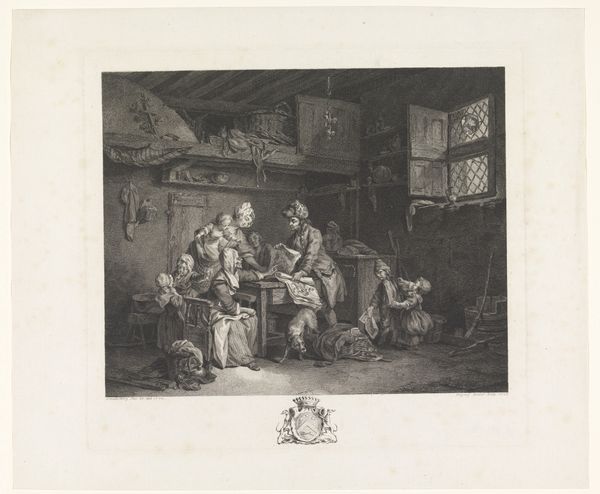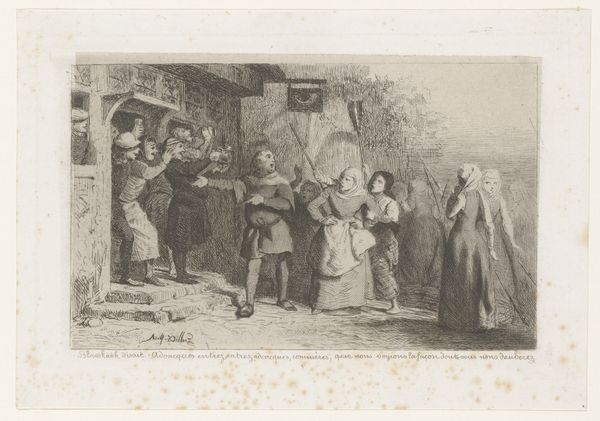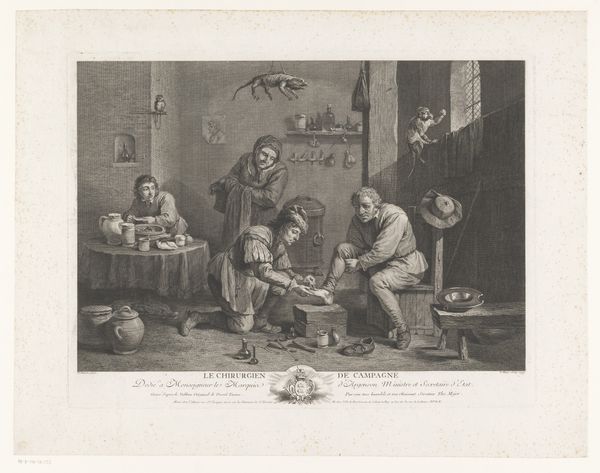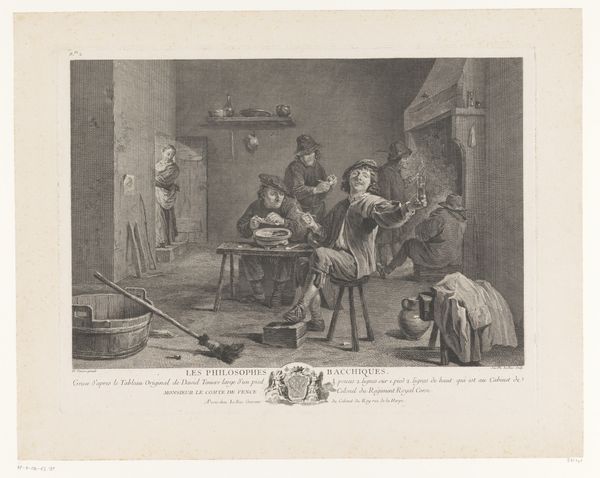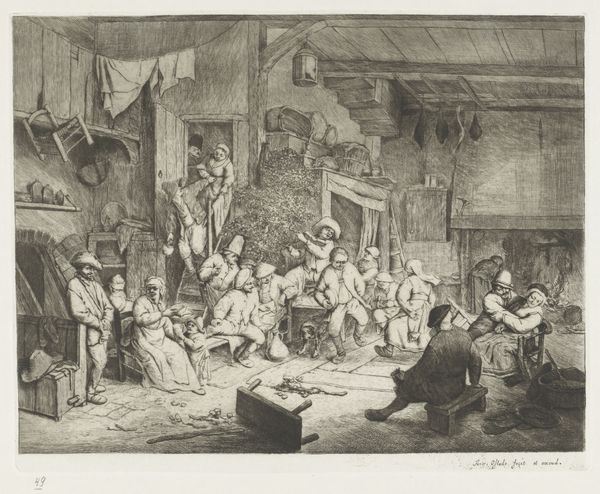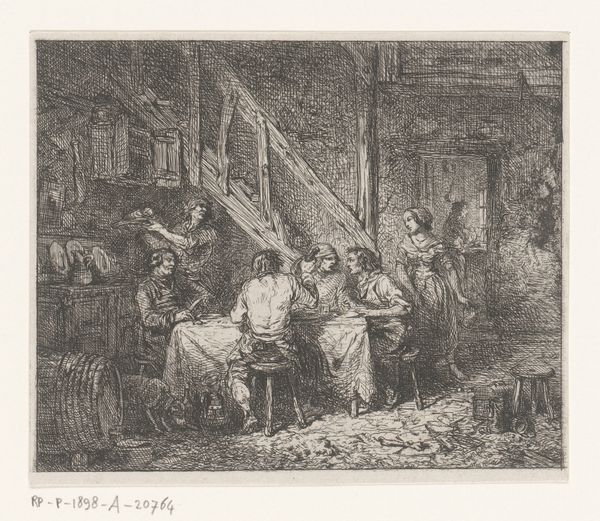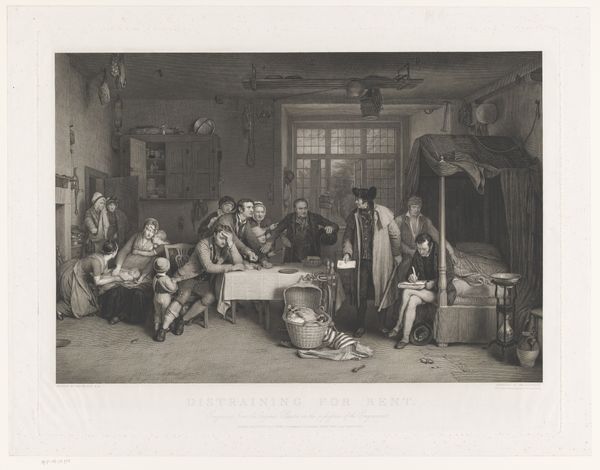
print, engraving
# print
#
genre-painting
#
history-painting
#
engraving
#
realism
Dimensions: height 182 mm, width 254 mm
Copyright: Rijks Museum: Open Domain
Curator: Let’s turn our attention to “Boze vrouw wijst mannen in een herberg de deur,” which roughly translates to “Angry Woman Showing Men the Door in a Tavern,” an engraving created around 1850 by Charles Billoin. Editor: The density of lines immediately strikes me, creating a sort of hushed, smoky atmosphere within the tavern scene. It almost feels claustrophobic, yet also frozen, as if a crucial moment has been captured mid-action. Curator: Absolutely. Billoin’s piece offers a compelling commentary on gender and power dynamics of that period. Look closely; who is controlling this space, and what does that signify? Editor: I am struck by how the contrast is really working: the composition leads the eye right to the standing woman, who is really emphasized through light compared to the darker areas of the space, such as near the fireplace. I am wondering if the artist is working to tell us who to prioritize. Curator: I think that the emphasis, intentionally or not, puts a spotlight on women and their space at that time. Gender roles within the domestic sphere would have been in constant negotiation during the era this print was made, as many of Europe’s social, political, and domestic traditions were turned on their head, often in times of revolution and high immigration from rural areas to more urban ones. How do such upheavals challenge or reinforce certain ideologies? Editor: Considering your commentary, I start seeing that domestic, private space almost as a theater where personal dramas and societal negotiations get played out. The gestures and the angles start to suggest other relations—are the men drunk? Curator: Precisely. And whose domain has been violated? I wonder what the cost of that could be. Billoin seems to be exploring a wider discourse about appropriate male behavior within that 19th-century framework and the disruption of domestic space, which resonates far beyond just a drunken tavern brawl. Editor: Considering that point, what might we extrapolate and conclude about what is communicated regarding interior vs. exterior—private vs. public? That would give viewers even more to consider beyond the basic "narrative". It speaks beyond its time period. Curator: I completely agree, thinking about those dialectics gives this piece continued contemporary value, it reveals not just a scene, but power and class struggles inherent to that space and moment in history. Editor: I concur. With such rich visual textures and lines to decipher, this relatively straightforward looking tableau quickly reveals the complexities and multiple facets it possesses when it is broken down analytically.
Comments
No comments
Be the first to comment and join the conversation on the ultimate creative platform.
